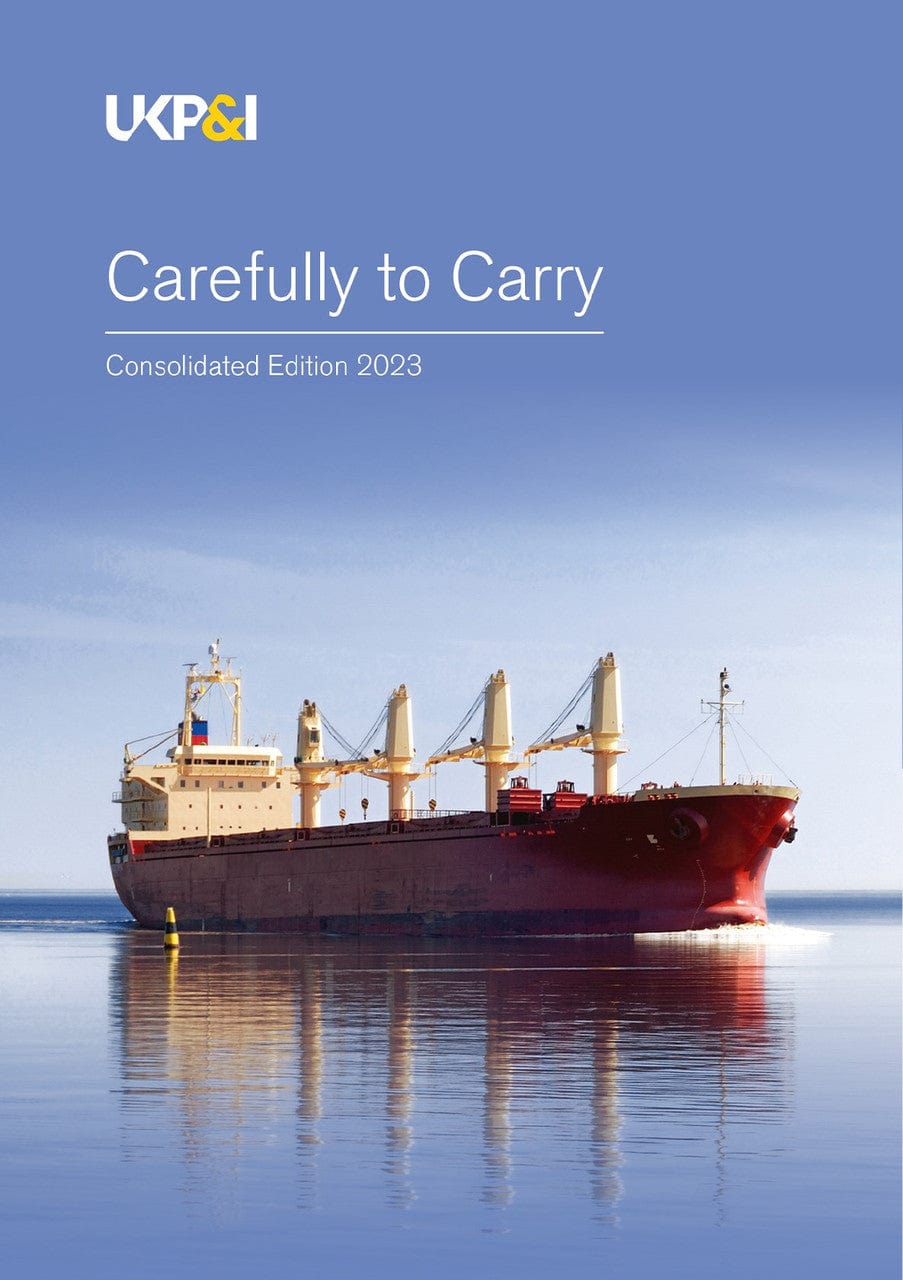Overview
This guide to the safe carriage, loading and storage of cargo covers the potential issues and dangers inherent in the transporting of bulk cargoes, from the characteristics and risks inherent in specific goods, hold preparation and hatch covers, to best practice when loading and unloading. Outlining and expanding on all major international cargo regulations and guidelines, it also includes detailed checklists, information on draught surveys and guides to preparing cargo plans. Cargoes covered include timber, gas, grain, steel and other metals, bulk goods and refrigerated goods.
Content
Foreword
Acknowledgements
Part 1 – Grain
Chapter 1 – Preparation, Survey and Load
Chapter 2 – Moisture Migration and Surface Ventilation
Chapter 3 – Cargo Measurement
Chapter 4 – The Carriage of Genetically Modified (GM) Crops
Chapter 5 – Soya Beans
Part 2 – Ores, Minerals and Fertilisers
Chapter 6 – Coal Cargoes
Chapter 7 – Bitumen (Natural and Rock) and Petroleum Coke
Chapter 8 – Mineral Ore Concentrates and Other Materials that May Liquefy
Chapter 9 – Sulphur Cargoes
Chapter 10 – Direct Reduced Iron (DRI)
Chapter 11 – Fertilisers
Part 3 – Steel and Other Metals
Chapter 12 – Steel
Chapter 13 – Scrap Metal
Part 4 – Timber and Forestry Products
Chapter 14 – Timber Deck Cargoes
Chapter 15 – Forestry Products
Part 5 – General Guidance
Chapter 16 – Draught Surveys
Chapter 17 – Hold Preparation and Cleaning
Part 6 – Bulk Cargoes – Liquid
Chapter 18 – Bulk Oil Cargoes – Shortage and Contamination Claims
Chapter 19 – Samples and Sampling in the Carriage of Liquid Bulk Cargoes
Chapter 20 – Flashpoint Contaminations of Diesel Oil and Gas Oil
Chapter 21 – Liquid Natural Oils, Fats and Fatty Products
Chapter 22 – Biofuels: Marine Transport, Handling and Storage Issues
Part 7 – The Carriage of Gas
Chapter 23 – Liquefied Gases
Chapter 24 – Liquefied Natural Gas (LNG)
Part 8 – Packaged Cargoes, Including Bags, Drums and Flexitanks
Chapter 25 – Sugar
Chapter 26 – Potatoes
Chapter 27 – Cocoa
Chapter 28 – Coffee
Chapter 29 – Bagged Rice
Chapter 30 – Agricultural Products in Non-refrigerated Containers
Chapter 31 – Calcium Hypochlorite
Chapter 32 – Thiourea Dioxide
Chapter 33 – Expandable Polymeric Beads
Chapter 34 – Flexitanks
Part 9 – Refrigerated and Controlled Atmosphere Cargoes
Chapter 35 – Refrigerated Container and Controlled Atmosphere Cargoes
Chapter 36 – Carriage Instructions for Refrigerated Cargoes
Chapter 37 – Fresh Fruit and Vegetables
Chapter 38 – Frozen Fish
Chapter 39 – Meat and Meat Products in Containers
Chapter 40 – Pharmaceuticals in Temperature Controlled Containers
Part 10 – General Container Operations Including Waste Shipments
Chapter 41 – Stuffing, Stacking and Lashing Containers
Chapter 42 – Container Top Safety
Chapter 43 – Container Crime
Chapter 44 – Waste Shipments in Freight Containers
Part 11 – Miscellaneous Cargoes
Chapter 45 – Heavy-lift and Project Cargoes
Chapter 46 – Agricultural Produce – Insect Infestation and Fumigation
Chapter 47 – Fishmeal Cargoes
Chapter 48 – Palletised Cargoes
Chapter 49 – Radioactive Cargoes
Chapter 50 – Seed Cake Cargoes
Part 12 – Cargo Planning and Securing (Including Hatch Covers)
Chapter 51 – Preparing Cargo Plans – Structural Limitations
Chapter 52 – Cargo Pre-loading Surveys
Chapter 53 – Stowage of Breakbulk Cargo (General Cargo)
Chapter 54 – Lashing and Securing Deck Cargoes
Chapter 55 – Steel Hatch Covers
References
Introduction
Foreword
I am very pleased to endorse this excellent and unique publication which strives to improve crew and vessel safety as well as enhancing loss prevention.
The 2023 consolidated edition of the UK P&I Club’s Carefully to Carry represents over 60 years’ worth of experience from several generations of international cargo experts together with claims and loss prevention specialists at one of the world’s leading P&I clubs.
It was back in 1961 that the UK P&I Club first set up its pioneering London advisory committee on cargo matters. The aim was to reduce claims through timely advice to the club’s members. The so-called ‘Carefully to Carry’ committee consulted widely with technical experts and went on to produce many articles on cargoes and the related issues that lead to claims.
The quality of the advice provided soon established Carefully to Carry articles as a key source of guidance for all the world’s shipowners and ships’ officers, whether entered with the UK Club or not. The articles also began to be used in claims negotiations and settlements, as well as being relied upon in court hearings.
In 2002 all the articles were gathered together, updated and made available as one entity by the Club for the first time. It continued to grow over the next 15 years to reach some 600 pages, prompting the Club to hand over the not-inconsiderable task of publication to leading shipping publisher Witherbys.
The first ‘consolidated edition’ duly appeared in 2018 and this 2023 edition marks the first of what we predict will be a long-running series of periodic updates of this definitive best practice guide on the carriage, loading and stowage of most types of seaborne cargo. Long may it continue.
Dimitris Fafalios
Chairman of INTERCARGO
Chair of the International Chamber of Shipping Bulk Carrier Panel
lang="en-GB"
Details
Number of Pages: 621
Published Date: March 2023
Book Height: 235 mm
Book Width: 155 mm
Author: UK P&I Club
ISBN: 9781914993121
Weight: 1.6 kg








